SERVICE DESIGN
FROM INSIGHT TO IMPLEMENTATION
Andrew Polaine, Lavrans Lvlie, and Ben Reason

Service Design: From Insight to Implementation
By Andrew Polaine, Lavrans Lvlie, and Ben Reason
Rosenfeld Media, LLC
457 Third Street, #4R
Brooklyn, New York
11215 USA
On the Web: www.rosenfeldmedia.com
Please send errors to:
Publisher: Louis Rosenfeld
Developmental Editor: JoAnn Simony
Managing Editor: Marta Justak
Interior Layout Tech: Danielle Foster
Cover Design: The Heads of State
Indexer: Nancy Guenther
Proofreader: Ben Tedoff
2013 Rosenfeld Media, LLC
All Rights Reserved
ISBN: 1-933820-33-0
ISBN-13: 978-1-933820-33-0
LCCN: 2012952337
Printed and bound in the United States of America
DEDICATION
To my wife, Karin, and my daughter, Alemtsehay, who have both seen the back of my head during the writing of this book more than they deserve
Andy Polaine
To my wife, Birgit, and children, Lars and Ella, my grounding and my inspiration
Lavrans Lvlie
To Kate, Otto, and Liberty. I love you.
Ben Reason
HOW TO USE THIS BOOK
This book was a team effort by Andy Polaine (interaction and service designer, lecturer, and writer) and Lavrans Lvlie and Ben Reason, co-founders of the service design firm live|work. When we formerly worked as interaction and product designers, we realized that what we were often being asked to design was just one part of a larger, more complex service. No matter how well we did our job, if another link in the chain was broken, the entire thing was broken from the customers perspective. We believe service design offers a way of thinking about these problems as well as clear tools and methods that can help designers, innovators, entrepreneurs, managers, and administrators do something about it.
To date, there are only a few books on service design as we understand the term. Some are collections of academic papers, and one or two give an overview of methods. They all have their merits, but we wrote this book because we wanted to capture both the philosophy and thinking of service design and connect it with very practical ways of doing service design.
This book is based on our experience with developing, doing, selling, and teaching service design over several years. It is also a stake in the ground, because we fully expect the practice to continue to develop and grow as more people take up the practice. Our hope is that readers will take what we have written as a starting point, not dogma, and go out and make the world a less annoying, less resource-hungry place.
Who Should Read This Book?
Service design is an activity carried out by a multidisciplinary group of people that includes Web designers, interaction designers, user experience designers, product designers, business strategists, psychologists, ethnographers, information architects, graphic designers, and project managers. Anyone from these backgrounds should find something valuable within this books pages.
For many people involved in interaction, user experience, and human-centered design, the insights-gathering methods described in this book will be familiar, as will some of the experience prototyping methods. The material about the history of service design, blueprinting, service ecologies and propositions, and measurement may be new to people coming from other design disciplines. That said, we think the way the familiar elements fit into the service design context can also be enlightening.
For design directors, marketing people, change agents, managers, and directors of companies and organizations, the case studies and strategic thinking sections will probably be the most inspiring, but we are at pains to point out that the devil is in the execution. The rest of the book deals with the details, which are as important as the vision. Understanding how service designers gather the material they present to stakeholders and what they intend to do with it afterward is important for those who commission designers. This understanding helps everyone work together more fruitfully and speak the same language.
Lastly, this book provides a good framework, set of tools, and case studies for anyone teaching service design, either as a module of another design program or as a complete program in itself. We believe this book contains a valuable mixture of theory and practice. In fact, we would not separate the two.
Whats in This Book?
In , we begin with a complete case study of Norways largest insurance company, Gjensidige, to provide an overview of how service design deals with everything from small details to business strategy. This chapter touches on the entire process and puts the rest of the book into context.
, examines the history leading to the development of service design, the shift from product to service economies in developed countries, and the ramifications for both design and business. The change in thinking from designing things to designing services is greater than many people think. We also make the case for why services need designing at all, and develop a rough taxonomy of services.
, offers a range of very practical tools and methods for capturing insights into peoples lives and using them to inform the design.
, describes how to use the service blueprint to view the complexity of a service through the eyes of customers or users taking a journey over time and across the multiple channels of the delivery of a service.
, explains the need to work with people outside the office, studio, or lab to prototype the experience of a service. Working with people who have a stake in the service as customers or staff enables designers to improve the design before development costs are incurred.
Prototypes need criteria by which we can measure the success or failure of the design, which is the topic of . We show how measurement can be introduced by service designers to not only monitor a services performance for management but to empower delivery agents and teams to understand how to improve their role in the overall quality of the service. This does not have to be a case of choosing between customer experience and profits, but can be a win-win situation for all.
, is our vision of where we think service design is heading and where its opportunities might lie. This chapter is more speculative, though we use case studies to highlight some of the trends we are seeing in the field.
What Comes with This Book?
This books companion website ( rosenfeldmedia.com/books/service-design/ ) contains links to resources related to service design and to this book in particular. Youll find more at the live|work site ( www.livework.co.uk ) and at Andys site, Playpen ( www.polaine.com/playpen ). Weve also made available the books diagrams, screenshots, and other illustrations (when possible) under a Creative Commons license for you to download and include in your own presentations. You can find these on Flickr at
rosenfeldmedia.com/books/service-design/ ) contains links to resources related to service design and to this book in particular. Youll find more at the live|work site ( www.livework.co.uk ) and at Andys site, Playpen ( www.polaine.com/playpen ). Weve also made available the books diagrams, screenshots, and other illustrations (when possible) under a Creative Commons license for you to download and include in your own presentations. You can find these on Flickr at  www.flickr.com/photos/rosenfeldmedia/sets/ .
www.flickr.com/photos/rosenfeldmedia/sets/ .
FREQUENTLY ASKED QUESTIONS
Is service design just customer experience, user experience, or interaction design?




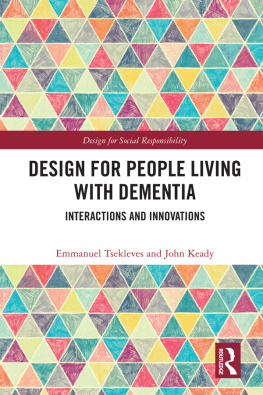

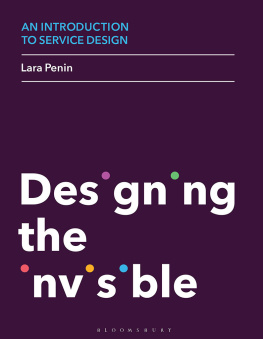
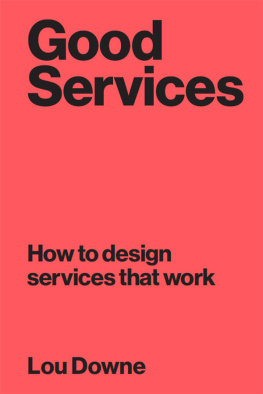
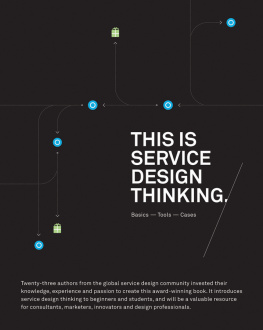


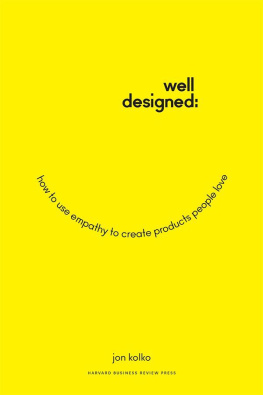
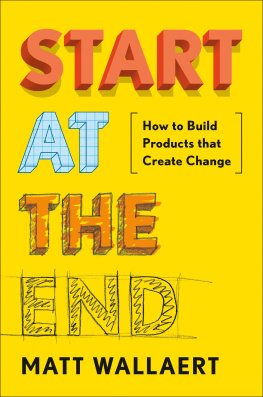


 rosenfeldmedia.com/books/service-design/ ) contains links to resources related to service design and to this book in particular. Youll find more at the live|work site ( www.livework.co.uk ) and at Andys site, Playpen ( www.polaine.com/playpen ). Weve also made available the books diagrams, screenshots, and other illustrations (when possible) under a Creative Commons license for you to download and include in your own presentations. You can find these on Flickr at
rosenfeldmedia.com/books/service-design/ ) contains links to resources related to service design and to this book in particular. Youll find more at the live|work site ( www.livework.co.uk ) and at Andys site, Playpen ( www.polaine.com/playpen ). Weve also made available the books diagrams, screenshots, and other illustrations (when possible) under a Creative Commons license for you to download and include in your own presentations. You can find these on Flickr at